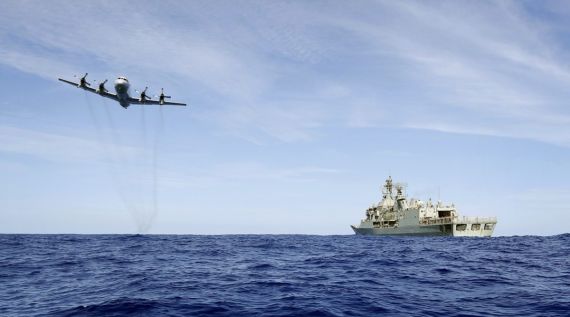MH370 update: Fresh hope for missing flight? Researchers discover new ocean detection device

It has been almost a year since authorities called off the search for the missing Malaysian Airlines flight MH370, but a new incredible technique gives renewed hope of finding the plane.
Earlier this month, three private companies — U.S. seabed exploration firm Ocean Infinity, Dutch firm Fugro and an unidentified Malaysian firm — have offered to resume the search in a "no find, no fee" basis.
The almost three-year hunt for the missing plane is the biggest in aviation history — spanning 120,000 square km in a $200 million multinational effort carried out by Malaysia, Australia and China.
Malaysian Transport Minister Liow Tiong Lai said they have yet to approve the offer, as it still has to be presented to the two other countries involved in the search.
Now, however, a study from Wales' Cardiff University gives fresh hope of finding the downed plane.
Daily Mail UK reported that the new detection technique uses underwater microphones, or hydrophones, to identify where and when objects fall into the ocean. Dr. Usama Kadri, lead author of the study, said, "Listening out for signatures from these deep ocean sound waves, we've uncovered a completely novel way of locating objects impacting on the sea surface."
This method should help spot meteorites, satellites and in this case, part of a missing aircraft that supposedly crashed into the ocean.
According to their research, when an object hits the sea, it causes a sudden pressure that then produces acoustic-gravity waves (AGWs). These are natural sound waves that move underwater at the speed of sound.
To test this, they dropped 18 spheres, from different heights and at varying distances, onto the surface of a water tank. Using a hydrophone, they measured the AGWs emitted from the pressure.
They then stepped up their research by analyzing hours of data from existing hydrophones near the Western Australian coast, where they calculated the time and location of recent earthquakes in the Indian Ocean.
Finally, they used the same hydrophones to analyze data from March 14, 2014, between 00:00 and 02:00 UTC, when the plane is thought to have disappeared over the Southern Indian Ocean. They were able to detect two "remarkably weak signals" around MH370's suggested flight path.
"Though we've located two points around the time of MH370's disappearance from an unknown source, we cannot say with any real certainty that these have any association with the aircraft," Dr. Davide Crivelli, co-author of the study, said.
According to technology website Gizmodo, while some experts are impressed with this research, they believe that "more modeling, both of the airplane striking the ocean and of the effects of the ocean floor itself, are required."
There is still a lot of uncertainty about this new research. But a fresh angle, along with the possibility of three private companies resuming the search, does give new hope for the families of the 239 passengers that went missing with flight MH370.











